Clunes Heritage Walk

Echoes of the Victorian gold rush still linger in Clunes, transporting visitors back to a bygone era of prosperity and excitement. Founded in 1851 during the height of the gold rush frenzy, Clunes emerged as a beacon of wealth and opportunity.
Today, the town's picturesque streets and meticulously preserved architecture serve as a living testament to its illustrious past. Wander around and you'll find yourself immersed in the best collection of 19th-century buildings in the country, each one a window to a rich and storied past.
Pick up a map of the town at the Clunes Visitor Information Centre or use the map below to explore the heritage locations.
Clunes Heritage Walk Map
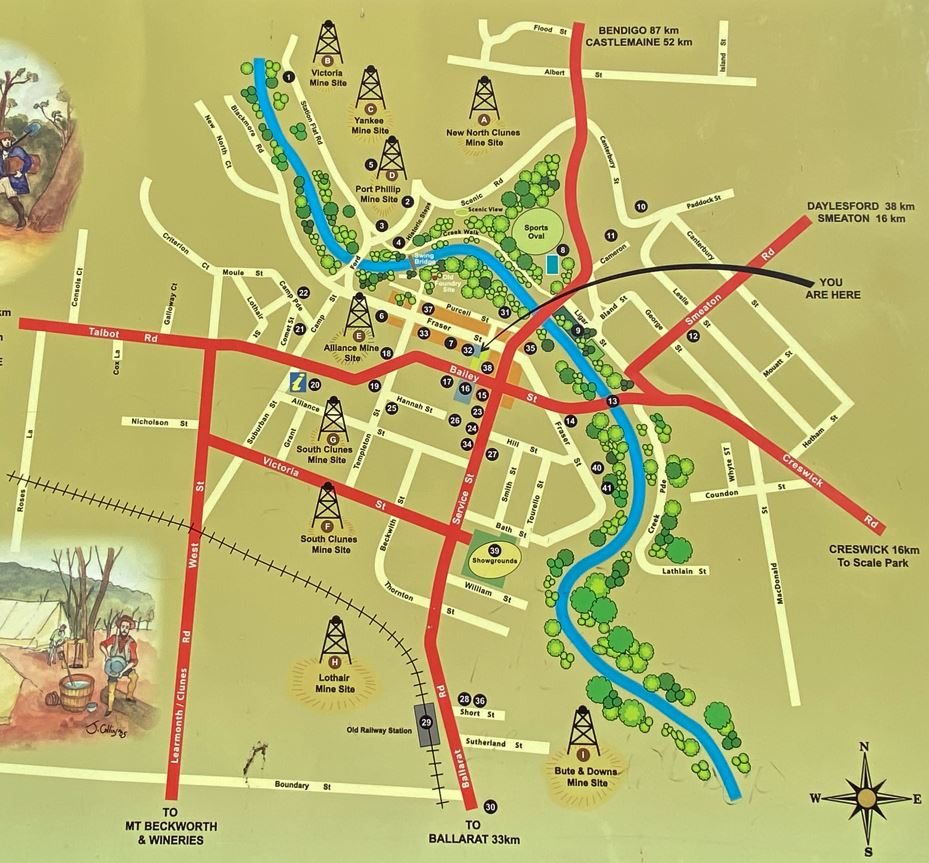
Sites of Gold Mines
A. NEW NORTH CLUNES MINE
B. VICTORIA MINE
C. YANKEE MINE
D. PORT PHILLIP MINE
E. ALLIANCE MINE
F. SOUTH CLUNES MINE
G. SOUTH CLUNES MINE
H. LOTHAIR MINE
I. BUTE & DOWNES MINE
The Port Phillip mine operated on deep quartz reefs which run under Clunes. It was instrumental in proving their richness thereby ensuring prosperity for the town. The mine produced over 16,000kg of gold, the fourth most productive gold mine in Victoria It was foremost in technical innovation and is of national significance to the history of mining in Australia.
The sights of the Yankee, Victoria and New North dunes quartz reef mine are marked by large mullock heaps and sights of many structures can be determined by the aid of early photographs. The New North Mines was the richest mine in Clunes, yielding dividends of 750,000 pounds.
Places of Interest
1 FIRST HOMESTEAD SITE 1839
2 FIRST GOLD DISCOVERY 1851
3 INSIDERS VERSUS OUTSIDERS 1857
4 STEPS PATH TO NORTH CLUNES
5 PORT PHILLIP MINE
6 OLD BUSINESS AREA
7 PRESENT BUSINESS AREA
8 SPORTSGROUND, SWIMMING POOL & TOILETS
9 QUEENS PARK & BOWLING GREEN
10 NORTH CLUNES STATE SCHOOL 1875
11 VIEW - (FROM CAMERON STREET)
12 VIEW - (FROM SMEATON STREET)
13 GOVERNMENT BRIDGE 1896
14 OLD TELEGRAPH HOTEL 1865
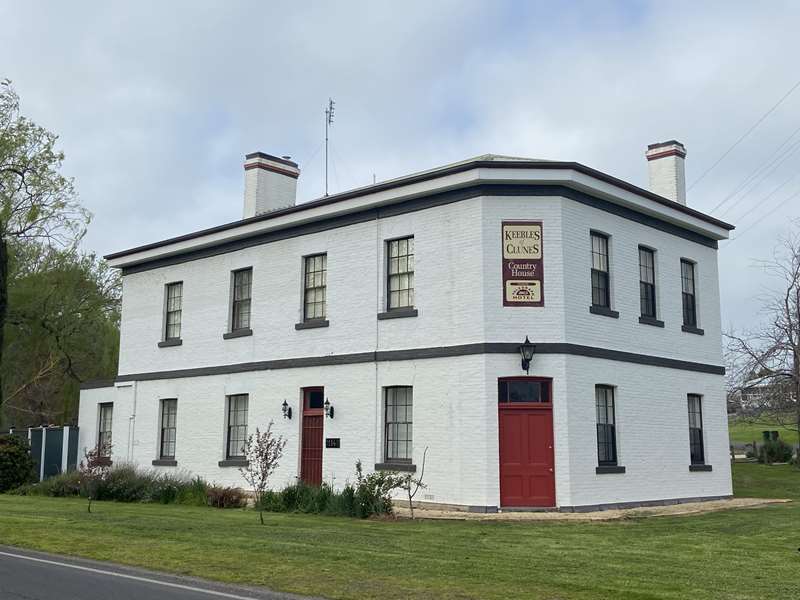
15 OLD POST OFFICE 1879
Cnr Bailey Street and Service St

16 TOWN HALL & COURT HOUSE 1873
Bailey Street

17 ST THOMAS AQUINAS CATHOLIC CHURCH 1873
92 Bailey Street
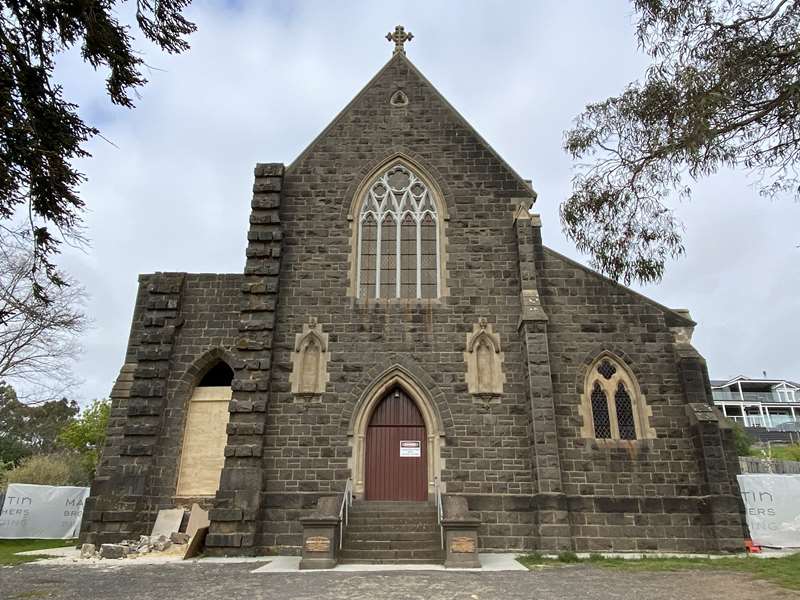
18 OLD FREE LIBRARY 1874
6 Templeton Street
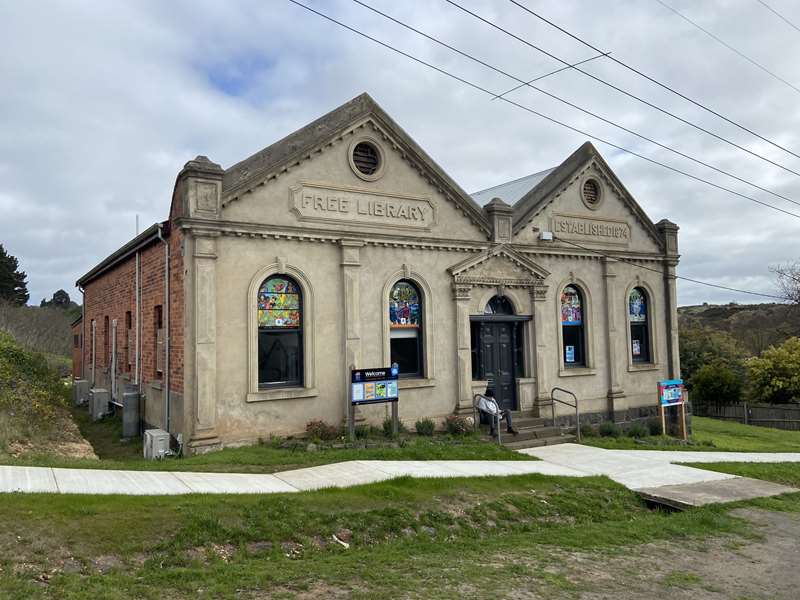
19 ST PAULS ANGLICAN CHURCH 1871
84 Bailey Street
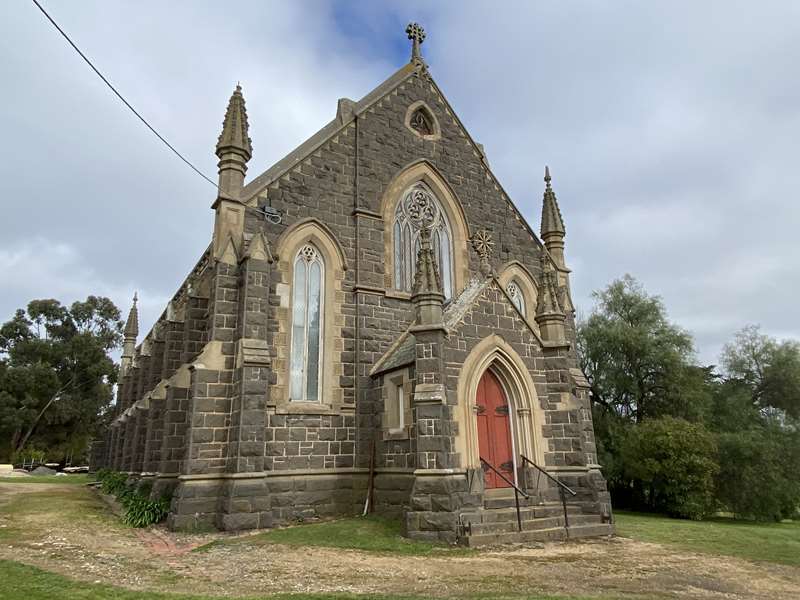
20 OLD SCHOOL COMPLEX 1881
70 Bailey Street
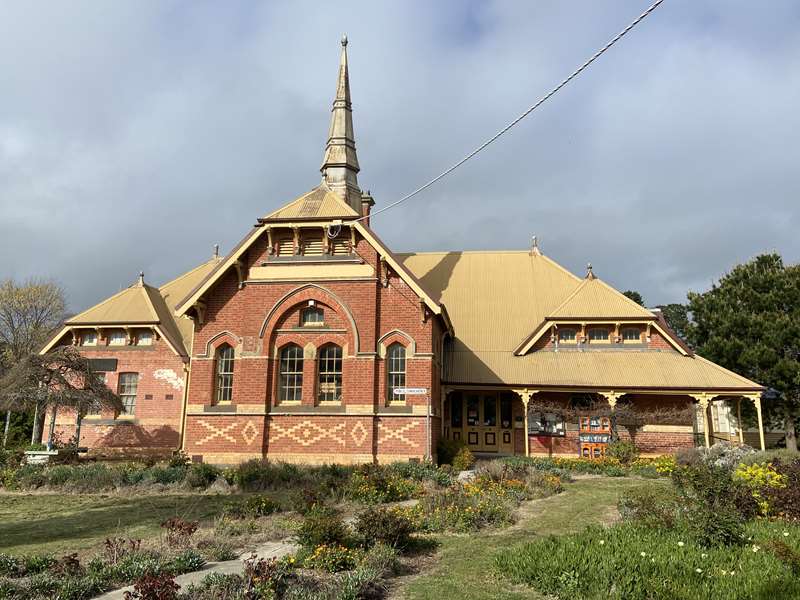
21 FORMER MASONIC HALL
22 VIEW (CAMP PARADE)
23 FORMER POLICE STATION
24 FORMER METHODIST CHURCH 1863
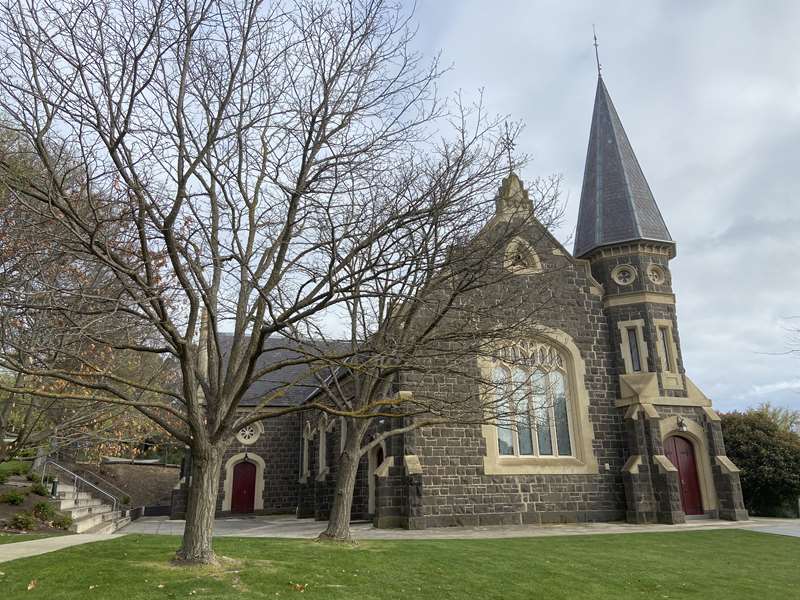
25 POLICE STATION
26 ST ANDREWS UNITING CHURCH, FORMER PRESBYTERIAN 1862
27 MASONIC HALL, FORMEF PRIMITIVE METHODIST CHURCH 1868
28 CLUNES DISTRICT HEALTH SERVICE
29 RAILWAY STATION 1874
30 SITE OF CHINESE RIOT 1873
31 CLUNES CARAVAN PARK
32 CLUNES MUSEUM C 1860
36 Fraser Street
33 UNION BANK C 1865
Cnr Fraser Street and Templeton Street
34 WESLEY COLLEGE CAMPUS
35 OLD SCHOOL OF MINES
36 NEIGHBOURHOOD HOUSE & GATEWAY
37 SENIOR CITIZENS
38 COLLINS PLACE & PARTERRE GARDEN
38 Fraser Street
39 SHOWGROUNDS 1863
40 SITE OF THE CORDIAL FACTORY
41 CLUNES & DISTRICT PRE-SCHOOL
Other interesting buildings and sites include:
Old cottage, 26 Fraser Street
State Savings Bank building, 28 Fraser Street
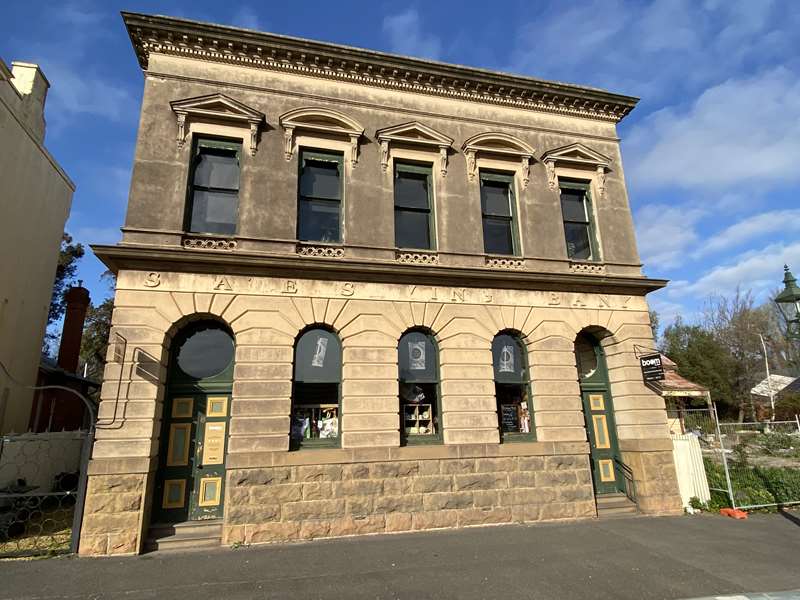
Clunes RSL, 30 Fraser Street
National Hotel, 35 Fraser Street
Richard Ford (1875-1961)
The Clunes Town Hall and Courthouse is a striking municipal building designed by Percy Oakden. Built in 1872, the distinctive building reflected the prosperity of a gold mining town in its heyday. But this is not a story about the Clunes Town Hall as such, though it is worth mentioning that the grand building has recently had a substantial makeover, returning to its original glory.
Instead the subject here is Richard Ford, arguably one of the town's most well known and revered artists. He was born in 1875 and died in 1961 and over the course of a long life he was a council foreman, horticulturalist and park curator and later taught woodwork at the Clunes Higher Elementary School. In addition to these many talents he was a prolific painter. Where Ford received his artistic training is unknown but his skills were considerable.
He executed numerous works of Clunes and its surroundings very much in the tradition of English landscape painting, casting the town in a soft bucolic light. An interpretation in great contrast to the many photographs of the period featuring rickety shacks, industrial-scale mining operations and denuded hills. Nonetheless, over the years many people wound up owning a Richard Ford work. There was one found at the Senior Citizens Centre during its recent revamp which has been donated to the Clunes Museum. Additionally, two more paintings were donated by Clunes Primary School. A further group of three still life paintings and two smoke etchings on plates were donated by Richard Ford's grand niece, Claire Philipps.
However, it was the aforementioned Clunes Town Hall which was the recipient of some of the most substantial creations. They came about in the form of a detailed stage proscenium and a war memorial painting, both of which can still be viewed today in the large public meeting room.
A century ago, town halls were one of the main spaces for regional dwellers. There, people would gather to dance, listen to music and watch plays. And the proscenium framing the stage was as essential as chairs and lights. Generally, they featured a painted backdrop, movable wings and a physical proscenium arch. The entire installation then served as the frame into which the audience observed a theatrical performance. By 1916 the time had come to replace the old proscenium and as a council foreman, Ford was uniquely placed to offer his skills in the creation of a new one. The result was spectacular. The backdrop depicted a paved patio bracketed by neo-classical balustrades looking out over a sumptuous lake and dramatic mountains. Four rectangular wings around three metres high featured sturdy oak trees thick with foliage. On their reverse side were framed vignettes of subjects such as native flowers and swaggies by water holes. With the flick of a latch, the stage could go from a European theme to Australian theme in moments.
Needless to say the council and town loved the final result and many spoke in "most eulogistic terms of the fine painting executed by Mr Ford," as reported by the Clunes Guardian and Gazette. In response "Ford said he could hardly express his feelings. He had done the work to the best of his ability and he was pleased to know that his efforts had been appreciated."
Six years later a memorial was created in the same space featuring photos of soldiers and nurses who served in the Great War and Ford was able to contribute once again. "In the centre is the representation of a rising sun," reports the Clunes Guardian and Gazette, "brilliantly and artistically painted by Mr Ford to whom much praise is due for the skill and care he has bestowed upon the whole work".
A century later his works remain in good condition. And with the Town Hall refurbishment and restoration works now complete, a new generation of Clunes residents and visitors will have the chance to experience them again in their glory.
Words by James Curzon
Photos:
Location
36 Fraser Street, Clunes 3370 View Map








